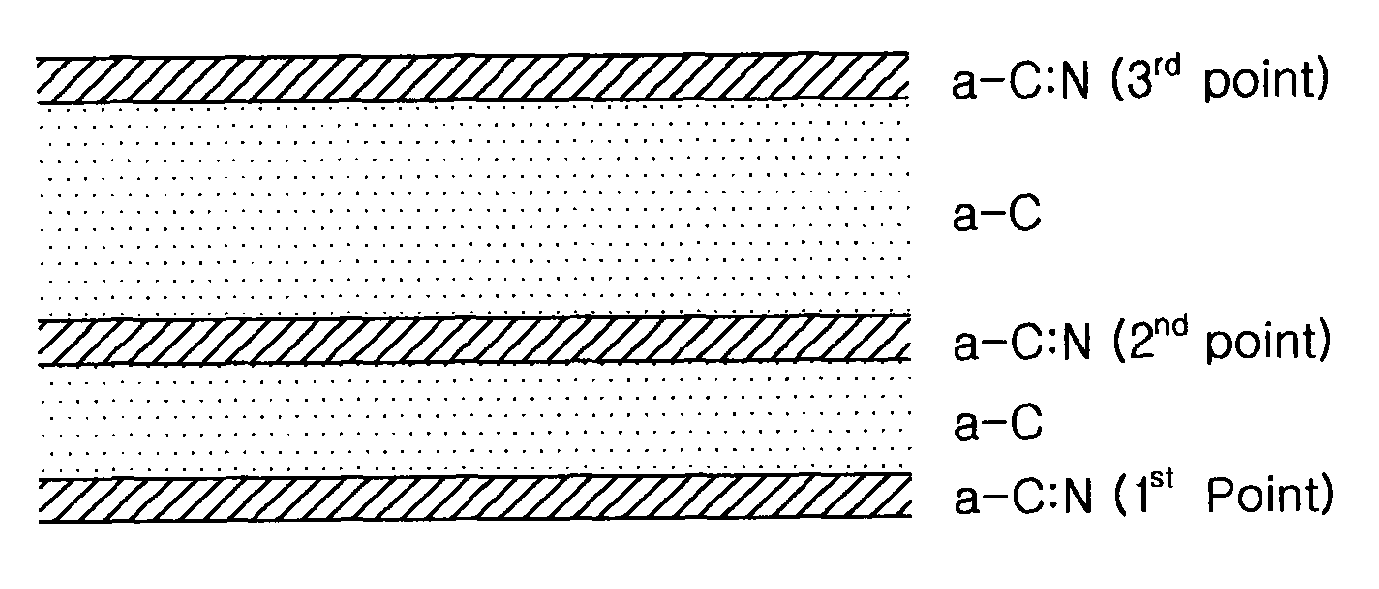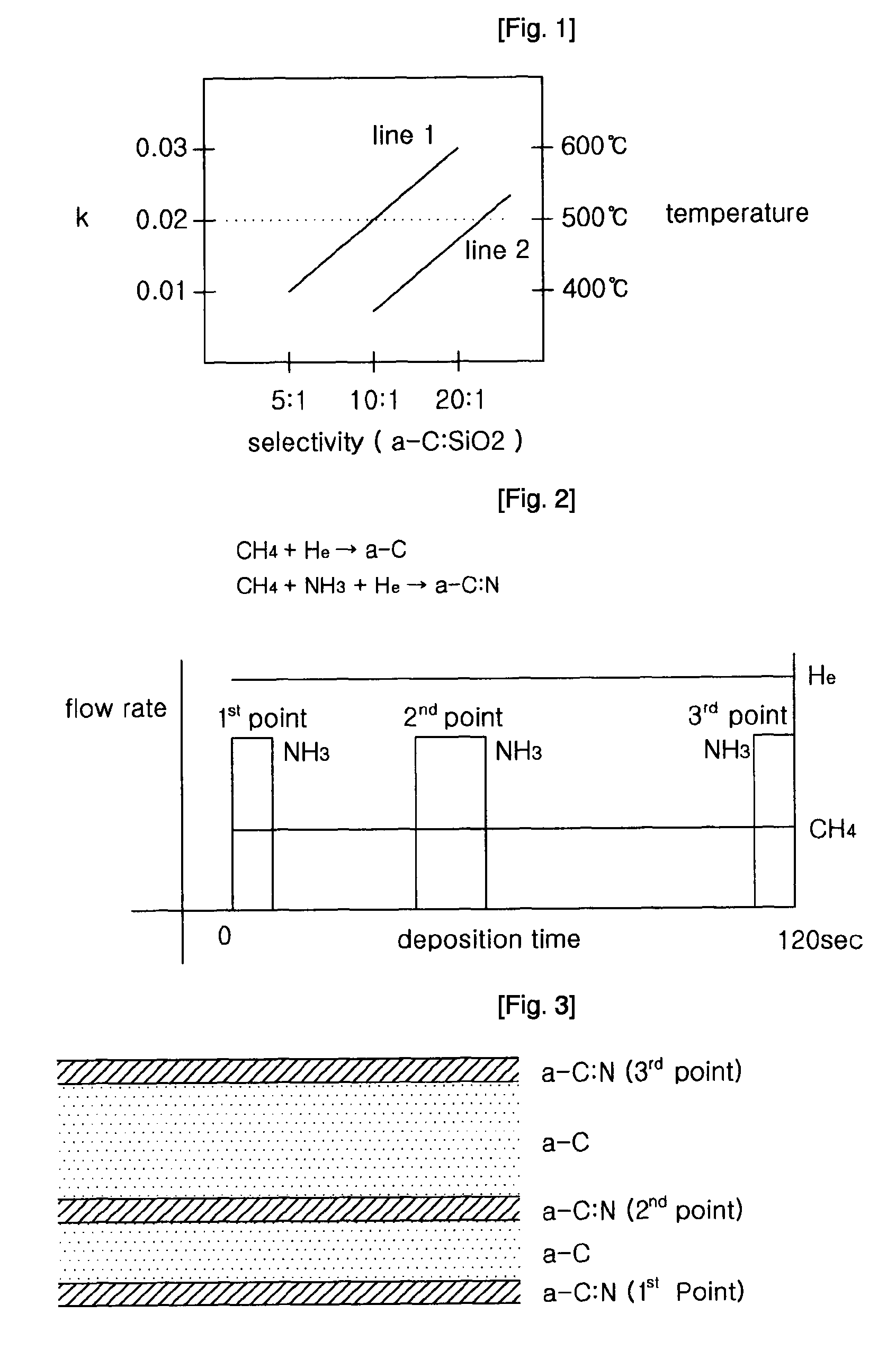Method of depositing thin film and method of manufacturing semiconductor using the same
a technology of thin film and anti-reflective film, which is applied in the direction of semiconductor devices, instruments, photomechanical treatment, etc., can solve the problems of nitrided-oxide film suffering, delay in actual application of amorphous organic carbon anti-reflective film, and increase the difficulty encountered in semiconductor manufacturing process. , to achieve the effect of increasing etching resistance, low extinction coefficient and high selectivity
- Summary
- Abstract
- Description
- Claims
- Application Information
AI Technical Summary
Benefits of technology
Problems solved by technology
Method used
Image
Examples
Embodiment Construction
[0021]Hereinafter, a detailed description will be given of the present invention, with reference to the appended drawings.
[0022]In general, an organic carbon film using plasma is formed in a manner such that a gas mixture comprising an organic gas, such as CH4, C2H6, C2H4, C2H2, C3H8, etc., and an inert gas, such as He, Ar, Ne, etc., is deposited through the application of plasma. In the common case of using a Deep UV light source of 248 nm, a thickness of about 1,500 Å is required. The optical properties of the organic carbon film depend on the total thickness of the carbon film and the bandgap of the constituent atoms thereof.
[0023]Further, the etching properties of the organic carbon film vary with the chemical reactivity of an etching gas, such as CF4 or CHF3, on the film, and the surface hardness, corresponding to resistance to ion impact.
[0024]Thus, if a film of a-C:N or a-C:F may be uniformly deposited to a thickness from ones of to tens of nm on or in the organic carbon film...
PUM
| Property | Measurement | Unit |
|---|---|---|
| thicknesses | aaaaa | aaaaa |
| thickness | aaaaa | aaaaa |
| thickness | aaaaa | aaaaa |
Abstract
Description
Claims
Application Information
 Login to View More
Login to View More - R&D
- Intellectual Property
- Life Sciences
- Materials
- Tech Scout
- Unparalleled Data Quality
- Higher Quality Content
- 60% Fewer Hallucinations
Browse by: Latest US Patents, China's latest patents, Technical Efficacy Thesaurus, Application Domain, Technology Topic, Popular Technical Reports.
© 2025 PatSnap. All rights reserved.Legal|Privacy policy|Modern Slavery Act Transparency Statement|Sitemap|About US| Contact US: help@patsnap.com



